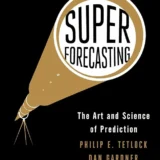Character, Context, and Procedure: The Cores of the Police Procedural
 One can’t analyze science fiction and fantasy without running into certain words over and over again: World-building. Sense of wonder. Neologism. Cognitive estrangement. Novum. These terms crop up time and time again because they are narrative techniques and modes of reader experience which – to a greater or lesser extent – are employed by every work of speculative fiction. The balance between these methods will always vary from work to work: Plot, theme, and characterization aside, Gregory Benford’s Timescape
One can’t analyze science fiction and fantasy without running into certain words over and over again: World-building. Sense of wonder. Neologism. Cognitive estrangement. Novum. These terms crop up time and time again because they are narrative techniques and modes of reader experience which – to a greater or lesser extent – are employed by every work of speculative fiction. The balance between these methods will always vary from work to work: Plot, theme, and characterization aside, Gregory Benford’s Timescape is very different from Frank Herbert’s Dune
, and still more different from Ursula K. Le Guin’s A Wizard of Earthsea
. One can argue that every single work of fiction – regardless of genre – uses these tools to some degree. But some genres – like speculative fiction – use these methods more than others, and I believe that police procedurals rely on them almost as much as speculative fiction.
When we look at police procedurals like Tony Hillerman’s Navajo Tribal Police series, Michael Connelly’s Harry Bosch books
, or Zoë Ferraris Kingdom of Strangers
it becomes clear that the police procedural is built on three principle axes: the character we invest in and follow, the environment/context in which that character acts, and the process they follow to achieve their goals.
Much like the speculative fiction techniques I mentioned above, we could conceivably say the same about any story in any genre. But the techniques through which police procedurals develop their characters, draw the reader into those characters’ context, and then portray their characters’ actions are fundamentally speculative.
The Conventional Police Hero

or Michael Crichton’s Rising Sun
, in television shows like Numb3rs
or Criminal Minds
, or in films like Bad Boys
or Point Break
, the genre has developed and explored a wide variety of character archetypes.
Perhaps one of the most recognizable of these archetypes is the iconoclastic but fundamentally street smart detective. Examples include Michael Connelly’s Harry Bosch, Michael Crichton’s John Connor, Eddie Murphy’s Axel Foley (in the Beverly Hills Cop franchise), or Steve Gutenberg’s Carey Mahoney (in the Police Academy
franchise). Another is the ingenue/rookie, which would include Crichton’s Peter Smith, Keanu Reeves’ Johnny Utah (in Point Break
), or Nick Frost’s Danny Butterman (in Hot Fuzz
).
Such heroes – who tend to be our perspective heroes in a police procedural – are supported by an easily recognizable assortment of character roles. What detective would be complete without a forensic/technical specialist like Kirsten Vangsness’ Penelope Garcia (in Criminal Minds), David Krumholtz’s Prof. Charlie Eppes (in Numb3rs
), or Michael Crichton’s Professor Sanders and Theresa Asukama (in Rising Sun
)? Or how about the demanding-yet-proud commanding officer, like Gil Hill’s Inspector Todd (in Beverly Hills Cop
), James Rebhorn’s Reese Hughes (in White Collar
), or Lt. Peter Byrnes (in Ed McBain’s 87th Precinct novels
)?
One could list countless examples of such character archetypes extending across literature, television, and film. But how are such characters related to science fiction and fantasy? Most speculative fiction stories do not feature a detective, after all. So how do police procedurals employ characters in a speculative fashion?
Both genres feature a wide assortment of recurring character conventions or archetypes. For every grizzled detective featured in a police procedural, we can point to a scientist-hero in a hard SF novel. For every ingenue/rookie cop assigned his first beat, we can find a hidden king. While the particular nature of police procedural characters differs from speculative characters, the two genres share a reliance on their own particular sets of character conventions.
To be clear, this is not bad. Convention does not (necessarily) mean formulaic, as the astounding variety of both police procedurals and speculative fiction should make clear. Both genres benefit from the existence of and their reliance on their respective character archetypes. By employing such character conventions, authors in both genres increase the accessibility of their stories. As readers, we can quickly grow comfortable with a particular character if we know the narrative role which they play in the story. Conventions lower a story’s barriers to entry.
Of course, other genres also rely on their own particular character conventions, however police procedurals and speculative fiction (along with romance and the westerns) are particularly notable for the long-term stability of their archetypes. I suspect their roots in the pulp tradition may have had something to do with this.
The Hero in Place: Context and World-building
When authors rely on conventional heroes (as most police procedurals and much speculative fiction does), it becomes very important to differentiate one work from another. While there are a variety of tools which can be used to this effect, world-building is the most frequent.

needs little world-building in comparison to Robert A. Metzger’s Picoverse
. But in reality, police procedurals rely on the same kind of world-building to establish cognitive estrangement in the reader.
Characters operate within a particular context. It is an environment with which they are typically conversant, but which the reader may be ignorant of. When a character adheres closely to character conventions in a particular genre, the more unusual the character’s environment/context is, the more the story itself stands out.
Tony Hillerman’s Navajo Tribal Police series specifically depicts characters who are officers of the Navajo Tribal Police. Regardless of what conventions Hillerman’s characters cleave to, their cultural, geographical, and professional context is likely to be unfamiliar to the vast majority of readers.

, which is set in Saudi Arabia (a country and culture most American readers will likely be unfamiliar with).
Where police procedurals feature more familiar geographic settings, they tend to highlight some less-familiar cultural niche within that environment. For example, within a wider investigative story set in Los Angeles, Numb3rs offers us a glimpse into a fictionalized portrayal of mathematics research. NCIS
, set in Washington, D.C., focuses our attention on the niche culture of the U.S. Navy. Michael Crichton’s Rising Sun
, though again set in L.A., focuses our attention on the points where Japanese culture intersects with American culture in business and politics. However, the more recognizable the environment, the riskier the world-building becomes.
When we look at a work of science fiction like Greg Egan’s The Clockwork Rocket, we need some very specialized knowledge to critique the physics-based world-building. When we consider a secondary-world fantasy like N.K. Jemisin’s Inheritance Trilogy
, we need very specialized knowledge to critique particular fine-grained details of the author’s world-building. The fantastic nature of speculative settings grants authors more wiggle-room.

makes for a good cautionary example of this risk: When published, the book was heavily criticized for presenting Japanese culture and American/Japanese business and diplomatic relationships in an offensively ignorant fashion.
Many police procedurals – particularly those that are set in commonly recognizable environments – offset this danger by relying less on world-building than on police procedures for their effect of cognitive estrangement.
Police Procedures as Novum
Most of us have not worked as police, nor as as forensic scientists, criminal profilers, or fraud specialists. As a result, the process of the hero’s investigation – in particular the hero’s specific steps and procedures – represents new heretofore unexperienced information that the reader internalizes as they read the story. In other words, the technical procedures depicted in the story become a novum, and serve to estrange the reader from their real-world experiences.
All of the authors I’ve mentioned here use technical jargon and the minutia of procedure in this fashion. However, it is in police procedural television that this process has become most refined. Entire franchises – Criminal Minds, Numb3rs
, White Collar
, Lie to Me
, The Mentalist
, etc. – are frequently built around some very specific set of skills that most viewers do not have. By visually demonstrating actions that the audience can understand on the screen and simultaneously providing the viewer with jargon-laced dialogue, the effect is analogous to providing the viewer with relatively accessible neologisms. We might not know what GSR is…but after watching a couple NCIS
episodes we’ll figure it out.
However, there is a difference in how police procedurals and speculative fiction employ this technique. In speculative fiction’s case, it relies on actual neologisms – new words which the author has made up for the purposes of their story, and which the reader must interpret based on their context in the text. In one sense, speculative fiction authors have it easy: since we so often are making up the procedures/processes as we go, we can often make up the words that describe them as well. For police procedurals set in the real world, this is a luxury they cannot afford. Their terminology has to be real, however specialized the jargon may be.
Birds of a Feather?
So if police procedurals fundamentally adopt speculative techniques in order to communicate their stories and engage their audiences, why don’t we see more secondary world police procedurals? Or far-future police procedurals? Or future military police procedurals? Or time travel police procedurals? Or fairy police procedurals? Clearly, the two genres are very compatible: they rely on the exact same techniques. So what divides police procedurals from speculative fiction?
That’s the question I’d like to explore in my next Crossroads post. Unfortunately, that post won’t happen next week: I’ll be taking next week off to visit Minneapolis, and to take part in this year’s Fourth Street Fantasy. But I’ll back in two weeks – on June 27th – to discuss the challenges of police procedural mash-ups with speculative fiction.
‘Til then, what are some of your favorite police procedurals (books, shows, movies, etc.)?
Chris Gerwel is a science fiction, fantasy, and horror writer. Raised in New Jersey, he spent ten years in Central & Eastern Europe in the market research industry, and today when he isn’t reading or writing speculative fiction, he works in the software industry. He lives in northern NJ, with a beautiful wife and a rambunctious puppy, and also writes the weekly blog The King of Elfland’s 2nd Cousin.

















3 Comments